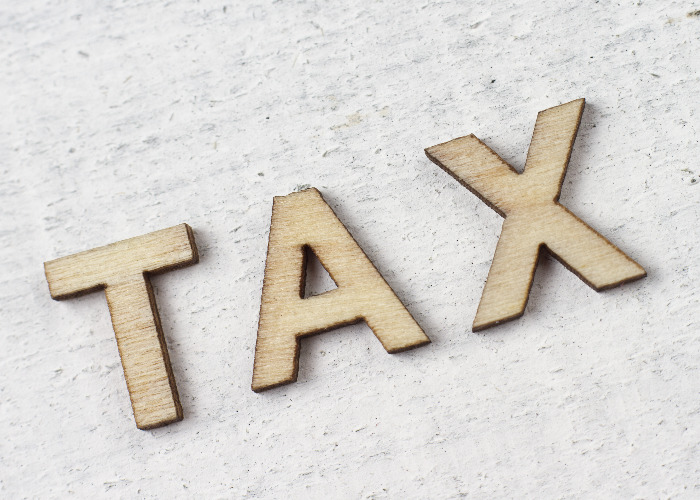Stealth tax hike: frozen Income Tax thresholds cost households thousands

Workers are facing shelling out up to £13,000 more in Income Tax than would have been the case if thresholds grew in line with inflation
There was some good news in the official figures published by the Office for National Statistics (ONS) in October.
While the Consumer Prices Index (CPI) measurement of inflation is stubbornly still at 6.7%, it is at last below the rate of wage growth, which now stands at 8.5%.
It means that for the first time in a long time workers are actually better off in real terms ‒ if they manage to obtain such a wage hike, obviously ‒ since those pay increases won’t be entirely eaten up by higher costs elsewhere.
However, it is the Government’s decision to ignore inflation entirely when it comes to the tax we pay on those salaries that is having an even bigger impact on our financial health.
Freezing thresholds
In years gone by, the Government has looked to increase the various tax thresholds in line with inflation.
The idea is that this way they represent what’s actually happening with our money ‒ if you get a payrise at the same rate of inflation, you aren’t any better off after all, since your outgoings will also have gone up by the same level.
This isn’t happening at the moment though. Back in the Budget, Jeremy Hunt, the Chancellor of the Exchequer, announced that various tax thresholds would be frozen until 2028.
It’s essentially a stealth tax. Hunt doesn’t have to formally put taxes up, and yet he still gets to boost the money coming into the Treasury since natural wage growth will do the job for him.
Cashing in on the stealth tax
We know that the Government is going to do well out of this approach.
A study this week by the Institute of Fiscal Studies determined that the stealth tax freeze is going to boost Treasury coffers by as much as £52 billion a year by 2027.
That’s an enormous sum of money, to the point that it’s difficult to actually understand.
A more informative approach is to work out what frozen tax bands are costing us as individuals, as regular workers.
And that’s where some new analysis from AJ Bell comes in.
The firm has crunched the numbers, going back to 2021 when thresholds were first put into a deep freeze, in order to establish where they would be today if they had moved in line with inflation.
After all, the September inflation figure ‒ published this week ‒ is the number traditionally used to inform such inflation-linked changes.
What frozen allowances are costing you
First, let’s take a look at what the personal allowance and higher rate threshold for Income Tax would be if it had increased in line with inflation over the years.
The table uses actual inflation figures for all years up to 2024/25, after which it uses the forecast rate of inflation from the Office for Budget Responsibility.
|
|
|
Inflation-linked allowances |
|
|
Year |
Inflation rate |
Personal allowance |
Higher rate threshold |
|
2021/22 |
3.1% |
£12,570 |
£50,270 |
|
2022/23 |
10.1% |
£12,960 |
£51,828 |
|
2023/24 |
6.7% |
£14,269 |
£57,063 |
|
2024/25 |
0.9% |
£15,225 |
£60,886 |
|
2025/26 |
0.1% |
£15,362 |
£61,434 |
|
2026/27 |
0.5% |
£15,377 |
£61,496 |
|
2027/28 |
1.6% |
£15,454 |
£61,803 |
The Personal Allowance is an important tax break since it covers how much you can earn before paying Income Tax on your salary.
And as the table shows, it should be significantly higher right now had it increased at the same rate as inflation.
Similarly, the higher rate threshold ‒ at which point people start paying 40% on their income ‒ should be a lot higher than it is right now.
Little wonder then that thousands are being dragged into that higher rate when in normal times they would still be classed as basic rate taxpayers.
That change in classification and therefore tax rate is having a huge financial impact too.
Here’s how the sums look according to AJ Bell.
|
Salary at start of 2021/22 tax year |
Total tax due with frozen allowances (from 2021/22 to 2027/28) |
Total tax due with inflation-linked allowances (from 2021/22 to 2027/28) |
Extra tax due under income tax threshold freeze |
|
£25,000 |
£23,259 |
£20,614 |
£2,645 |
|
£33,000 |
£36,333 |
£33,688 |
£2,645 |
|
£50,000 |
£75,505 |
£62,139 |
£13,366 |
|
£75,000 |
£157,164 |
£143,941 |
£13,223 |
As you can see those earning £50,000 are facing shelling out £13,000 or more in Income Tax than would have been the case if thresholds grew in line with inflation.
Even those on more modest incomes are thousands of pounds out of pocket.
Worst of all, there isn’t a huge amount any of us can do about the situation.
It does highlight the importance of making sure you’re on the right tax code, so that you’re paying the correct rate of Income Tax, while it’s also crucial to follow the steps we’ve outlined to cut your tax bill wherever possible.
Comments
Be the first to comment
Do you want to comment on this article? You need to be signed in for this feature